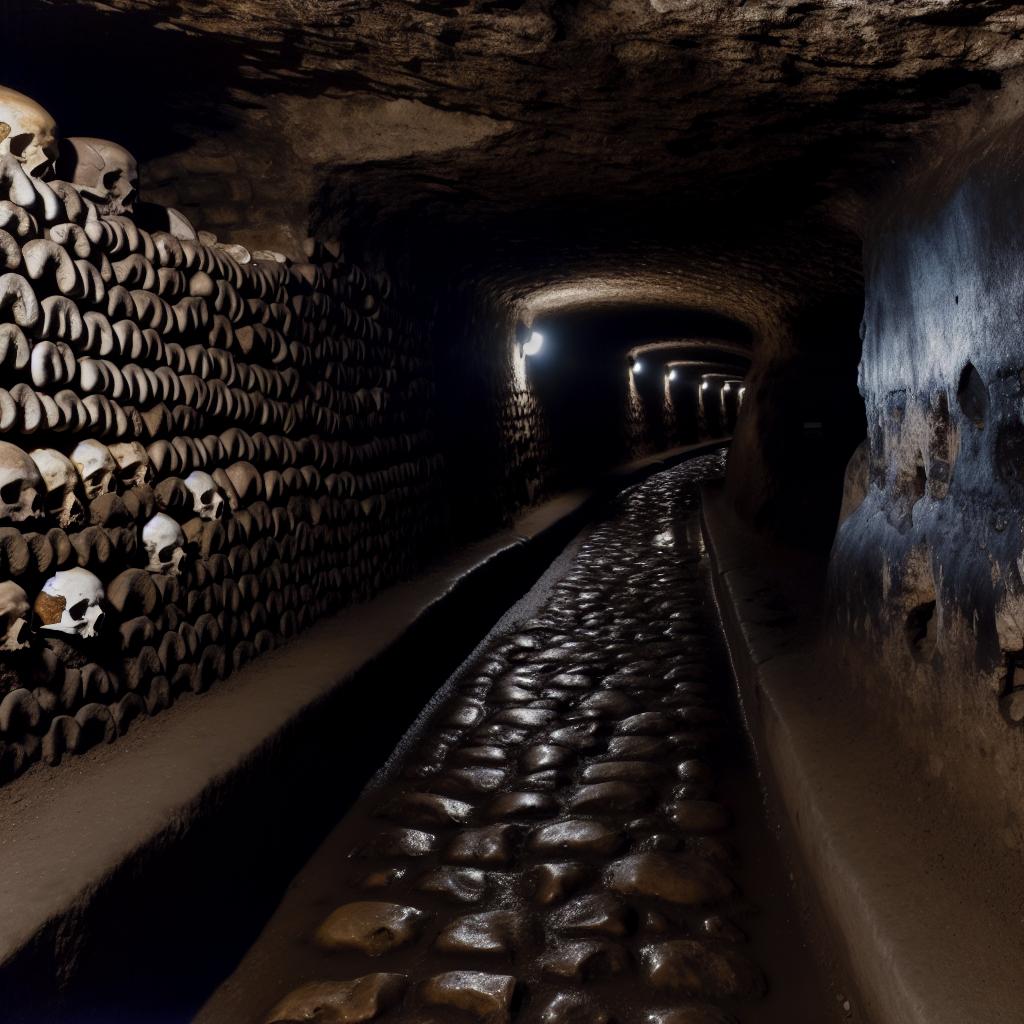The Paris Catacombs: A Subterranean Enigma
The Paris Catacombs are a remarkable subterranean network of ossuaries located beneath the city of Paris, France. This extensive area serves as both a historical site and a curiosity for those interested in unique urban environments. The catacombs have become one of Paris’s most intriguing tourist attractions due to their historical significance and eerie ambiance.
Formation and Purpose
The catacombs were originally part of a network of limestone quarries, from which much of the stone used to build Paris was extracted. By the late 18th century, these tunnels were repurposed to house human remains. The purpose was to alleviate the overcrowding of cemeteries, which had become a public health concern. As cemeteries reached their capacity, Paris authorities faced the daunting task of relocating the remains to ensure the decaying bodies did not become a source of health hazards.
During the period known as the Great Reformation of the Parisian Cemetery System, human remains were transferred discretely to the catacombs at night. Parish priests led the sacrilegious undertakings, transporting bones in street processions accompanied by singing and prayers to sanctify the relocation. This process not only solved immediate public health issues but also set the stage for the creation of an unprecedented space where art and memory intertwine.
Structure and Design
Beneath the bustling streets of Paris, the catacombs consist of more than 200 miles of tunnels and pathways. Around 1.7 kilometers are officially open to the public, known as the Den of the Dead. Visitors walk through dimly lit corridors lined with stacks of bones arranged in artistic patterns. These remains belong to more than six million individuals, collected from various Parisian cemeteries.
The architectural design within the catacombs is meticulous and has an aesthetic appeal. Carved walls, chiseled stones, and patterned arrangements reflect an eerie yet compelling artistry. Aside from bone structures, plaques and inscriptions provide historical context and make philosophical observations on mortality, serving as a form of communication across the ages.
Tourist Experience
Those interested in visiting the catacombs can participate in guided tours that provide insight into the history and design of this unique burial site. Visitors should be prepared for a descent of 20 meters below ground level and a moderately challenging walk through the narrow and sometimes uneven passages. Traversing through the tunnels offers an evocative experience, combining curiosity with a sense of connectedness to those who once walked the Parisian streets.
For more information on visiting the catacombs, consider checking the official website for current visitor schedules and guidelines. The tours often feature elements beyond mere exploration, incorporating stories and mystical legends that add layers to the narrative tapestry of the catacombs.
Scientific and Cultural Importance
The Paris Catacombs are not just of historical interest; they also hold scientific significance. The area provides natural laboratories for studying geological formations, as well as insights into past Parisian practices surrounding death and burial. The limestone beneath Paris tells stories of ancient seas that existed millions of years ago, and scientists can analyze fossils within these formations to enrich our understanding of historical climates and ecosystems.
Culturally, the catacombs are a testament to human ingenuity in confronting demographic challenges. They symbolize the shifts in societal perspectives regarding death and commemoration. Artists, historians, and researchers continue to study this cultural heritage site, exploring its impact on both contemporary art and historical reflection.
Preservation Efforts
Preservation and study efforts continue, aiming to maintain the integrity of this vast underground archive. The French government, along with heritage organizations, invests in ensuring the stability of the catacomb structures. Advanced techniques in conservation science are implemented to monitor environmental conditions, preventing irreparable damage due to moisture, microbial growth, and other underground challenges.
Researchers in urban planning and anthropology are keenly interested in how such massive subterranean spaces interact with modern urban settings above ground. The catacombs serve as a living classroom, illustrating the principles and dynamics of sustainable urban expansion without losing track of historical continuities.
Conclusion
The Paris Catacombs represent a fascinating fusion of human history and geology, offering visitors a glimpse into the hidden layers beneath this iconic city. By exploring the catacombs, one gains insights into the challenges faced by urban environments throughout history and the resourceful solutions devised by past societies. Visitors are reminded of the intertwining complexities of life and death, hidden just below the surface of today’s Paris. This labyrinth of bones and stone becomes a profound space for reflection, bridging time along poignant pathways where history lingers silently amidst the echoes of life’s enduring cycle.









